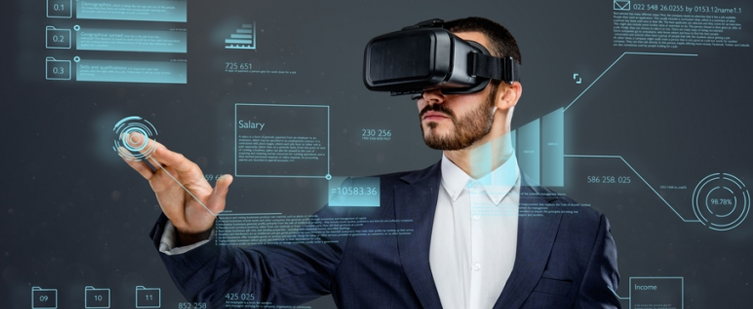In the 21st century, technology has evolved at an unprecedented pace. As we stand on the precipice of a new digital age, two emerging technologies – Virtual Reality (VR) and Artificial Intelligence (AI) – are making waves and transforming industries. But what happens when they converge? The integration of VR and AI promises not only to reshape the tech landscape but also to redefine our very understanding of the digital experience.
What are Virtual Reality and Artificial Intelligence?
Before delving into the heart of their integration, it’s vital to understand both VR and AI individually.
Virtual Reality (VR) is a technology that immerses users in a fully digital environment, often through the use of a headset. It creates a simulated experience that can be similar to or completely different from the real world. Applications of VR range from entertainment (like video games) to training simulations in industries like aviation or medicine.
Artificial Intelligence (AI), on the other hand, refers to machines that are designed to mimic human intelligence. This includes tasks such as problem-solving, understanding natural language, and decision-making. AI systems learn from data, which means they get better over time as they accumulate more information.
The Convergence of VR and AI
Now, imagine a world where your VR experience is personalized and adapted in real-time by an AI. Instead of static simulations, you’d have dynamic environments that respond to your actions, behaviors, and even emotions. This is the power of VR and AI integration.
1. Personalized Virtual Worlds
One of the most significant potential benefits of integrating AI with VR is personalization. AI can analyze a user’s preferences, past behavior, and real-time interactions to modify the VR environment. This could mean altering storylines in virtual games, creating personalized workouts in fitness apps, or designing educational curriculums tailored to an individual’s learning style.
2. Enhanced User Interactions
In a typical VR environment, user interactions are predefined. With AI, these interactions can become more organic. The AI could recognize user gestures, voice commands, and even emotional cues, allowing for a richer and more intuitive user experience.
3. Real-time Feedback
Training simulations, especially in fields like medicine, could benefit enormously from real-time feedback. An AI-powered VR simulation could analyze a trainee’s actions and provide instant feedback, helping them learn and correct mistakes on the fly.
4. Adaptive Learning Environments
Educational VR applications have been on the rise, but integrating AI could take it to the next level. Based on a student’s performance, the AI could adjust the difficulty level, introduce new challenges, or provide additional resources, ensuring optimal learning outcomes.
5. Emotionally Responsive Virtual Beings
One of the most fascinating prospects is the creation of virtual characters or avatars that can understand and respond to a user’s emotional state. These avatars could serve as companions, coaches, or even therapists, providing human-like interactions in the virtual realm.
The Challenges Ahead
While the convergence of VR and AI is exciting, it’s not without its challenges:
- Data Privacy: With AI analyzing user behaviors and interactions, there are significant concerns about data privacy. Ensuring user data remains confidential and is not misused will be crucial.
- Hardware Limitations: Advanced AI requires computational power, which could be a challenge for typical VR headsets. Integrating the two might require new hardware designs or reliance on cloud-based computations.
- Ethical Concerns: The possibility of creating emotionally responsive avatars raises ethical questions. How do we ensure these interactions are genuine and not manipulative?
The Future is Now
The integration of VR and AI is no longer just a concept; it’s a reality. Companies like Facebook’s Meta are investing heavily in creating AI-powered VR environments. As the technology matures, we can expect a shift from static, one-size-fits-all VR experiences to dynamic, personalized, and responsive virtual worlds.
Conclusion
The digital frontier is ever-evolving, and the integration of Virtual Reality and Artificial Intelligence marks a pivotal moment in this journey. As developers, businesses, and users, it’s essential to understand the potential of this convergence and navigate the challenges. The future holds a realm where our virtual experiences are as rich, intuitive, and dynamic as our real-world interactions.


